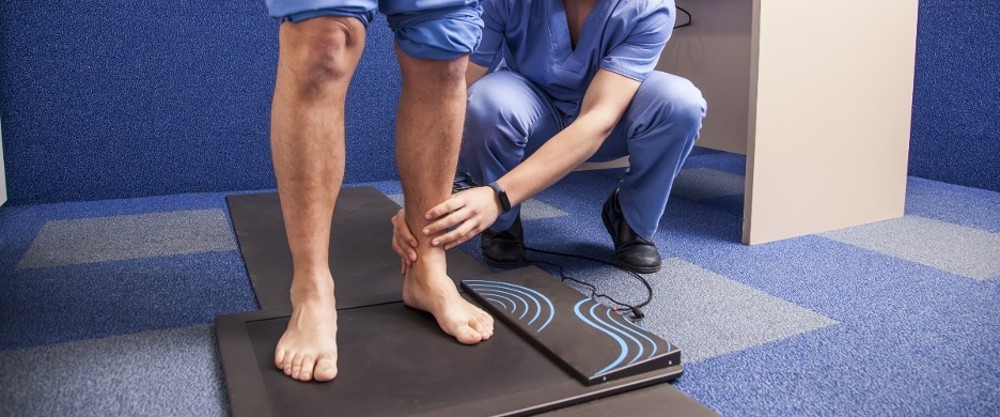Met Your Deductible? Time to Stop Putting OFf Necessary Foot Care!
In the world of healthcare, the passing of a single day can mean a difference of hundreds or even thousands in out-of-pocket expenses.
That’s especially true if that one day takes you from December 31 to January 1—when many insurance plans (and in particular deductibles) reset.
By waiting too long for necessary care, you could end up spending a lot more than you need to. But on the other hand, if you’ve already met your deductible, now may be the best time to make a real investment in your future health and happiness.
At Waco Foot & Ankle, we work hard to keep our services as affordable as possible for our patients—and we always strongly encourage you to be proactive about any foot or ankle concerns and take care of them before they become an emergency.
So if you have some end-of-year benefits with a hard deadline coming up, don’t miss your chance to take advantage of them!

End-of-Year Insurance Scenarios: Do They Apply to You?
There are two huge reasons why many of our patients significantly benefit from scheduling an appointment with us before the end of the year. One or both may apply in your situation.
You’ve already met your yearly deductible.
Most health insurance plans have a yearly deductible, which is a minimum amount that you need to spend on healthcare costs before your insurance “kicks in” and starts to pay for health services.
If you haven’t met this deductible yet, you’ll likely be paying 100% out of pocket for any health care expenses until the deductible is met.
However, if you have met your yearly deductible, insurance will help with any covered services at a rate determined by your plan. And if you’ve reached your out-of-pocket maximum, insurance will pay for 100% of covered services!
In other words, if you’ve met your yearly deductible, you can get covered health services at a steep discount—or potentially even for zero out-of-pocket costs. You can’t beat free!
Almost all deductibles reset on Jan. 1 (even if your plan renews on a different date), at which point you’ll go back to needing to meet your full deductible before insurance kicks in. It’s a hard deadline you definitely don’t want to miss.
You have an insurance plan with a flexible spending account (FSA).
A flexible spending account, or FSA, is a special tax-advantaged account that you can use to pay for qualifying medical expenses.
If your plan includes an FSA, you elect to have a certain chunk of money taken out of your paycheck and put into your FSA. (Your employer may contribute funds as well). Contributions to your FSA are made “pre-tax” and reduce your taxable income, meaning that you can save up to several hundred dollars on your taxes by funding and using your FSA for your health care expenses.
The downside is that, unlike a health savings account (HSA), FSA funds typically do not carry over from year to year. Depending on the conditions set by your employer, you may have either a 2.5-month “grace period” to exhaust your FSA funds, or be limited to carrying over just $500 (regardless of your account balance).
Because FSAs are a little more complicated and may not necessarily reset precisely at the end of the year, it’s important that you confirm with your insurance provider when any funds need to be spent. However, it’s relatively common for this deadline to be at or near the end of the calendar year.

Foot Care Is a Great Choice for End-of-Year Health Spending
Foot care is extremely important for your long-term physical and mental health, since painful feet can easily keep you from exercising and enjoying life in the ways you want to.
Now, we certainly understand that, deductible met or not, nobody wants to go see a doctor unless they have a reason to do so. We’re not encouraging “frivolous” spending.
However, making some time for your foot and ankle care now, when you have the opportunity to do so, can pay off in huge ways down the line—saving you a lot of hassle (and money) in the years to come.
Here’s a good example:
If foot pain has been an on-and-off problem for you for a long time, getting a good pair of custom orthotics can often make a huge difference. The right set will not only help you deal with any current symptoms you might be experiencing, but also dramatically reduce your risk of subsequent injuries, as well as recurring foot, leg, knee, hip, and even back pain. Plus, a well-built pair of custom orthotics may last 3-5 years on average, or sometimes even longer!
Another example? If you’ve just started noticing the early warning signs of a bunion, hammertoe, or other foot deformity, you are much better off addressing it sooner than later. These conditions generally only get worse with time, and if you wait another year to take action, you may lose your window of opportunity to manage your deformity successfully without a need for surgery.
These are just a couple of quick examples, but there are many more.
Don’t Wait to Get the Care You Need!
When it comes to most foot and ankle concerns, we always recommend seeing us sooner rather than later. The earlier you act to intercept injuries, deformities, and other conditions, the less pain you have to go through—and the more likely you’ll be able to avoid more aggressive treatment options (including surgery.)
In other words, there are both health and financial incentives to being proactive. And if you have a deadline coming up to take advantage of meeting your deductible or using your FSA funds, that’s even truer!
So don’t wait any longer to get the care you need! Our schedule for the end of the year is filling up, so reach out today. You can call our office at (254) 776-6995, or request an appointment online
